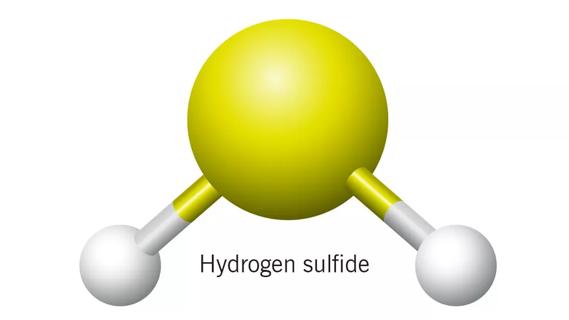Novel study uses machine learning to create accurate predictive model for detection

MicroRNA molecules (miRNAs) associated with hepatocellular carcinoma (HCC) are present and detectable in saliva and hold promise as highly sensitive and noninvasive biomarkers of the disease, Cleveland Clinic investigators have found.
Cleveland Clinic is a non-profit academic medical center. Advertising on our site helps support our mission. We do not endorse non-Cleveland Clinic products or services. Policy
Their research, which leveraged machine learning to build a predictive model for HCC, is the first to evaluate salivary miRNAs in the setting of HCC, although the small, non-coding RNA segments have been studied in saliva in other forms of cancer, such as head-and-neck, lung and breast tumors. “Using machine learning technology, we identified 10 miRNAs in saliva which, when combined with clinical data, were able to detect HCC with 87% accuracy,” says Federico Aucejo, MD, Director of the Liver Cancer Program and Surgical Director of the Liver Tumor Clinic in Cleveland Clinic’s Department of General Surgery. “Notably, some of the HCCs were early-stage disease.”
miRNAs are present in cells and diverse body fluids. Because they are involved in post-transcriptional regulation of gene expression impacting cellular development, growth and proliferation, they have potential to serve as biomarkers in a wide array of diseases, including cancer.
HCC is the most common form of liver cancer and responsible for about 1 million deaths worldwide every year. It is usually associated with chronic liver disease (CLD) of various etiologies, including hepatitis C and B viruses, chronic alcohol abuse and fatty liver disease.
Treatment is more effective and overall survival chances improve when HCC is detected early. Because of the lack of effective tools for early detection and adequate surveillance in high-risk populations, at the time of diagnosis as many as 70% of HCC patients are not candidates for potentially curative treatment with ablation, resection or transplantation.
Alpha-fetoprotein commonly is used alone or in combination with ultrasound for diagnosis, but its sensitivity in this disease setting is only 39% to 65%.
“Survival in patients with HCC is dismal because of the late diagnoses and tendency for recurrence after treatment,” says Dr. Aucejo. “In addition, only about half the tumors secrete alpha-fetoprotein. Thus, there is a great need for new candidate biomarkers.”
Salivary biomarkers for HCC, if present, would be advantageous because collection would be noninvasive, cost-effective and would not require a clinical setting.
For their proof-of-concept study, the Cleveland Clinic authors used small RNA sequencing to compare miRNAs in saliva from 20 patients with HCC and 19 with cirrhosis. All participants were adults who had undergone liver transplantation, surgical resection or tumor and liver biopsy.
Eleven of the 20 patients with HCC concomitantly had CLD and the researchers performed analyses with their saliva samples combined and stratified by CLD. Differential expression of salivary miRNAs was compared to a previously published report of miRNAs in liver tissue of patients with HCC versus cirrhosis. To determine if salivary miRNAs had potential to detect HCC, support vector machine models and leave-one-out cross-validation were used.
Of the 4,656 miRNAs detected, 365 were significantly differentially expressed in the samples of participants with HCC versus cirrhosis and met the threshold for medium or high confidence.
Working in collaboration with Lerner Research Institute scientist Daniel Rotroff, PhD, “we applied machine learning to examine associations and combinations of miRNAs with variables such as age, sex, and race and to distinguish miRNA associations specific to HCC versus those that may have been due to impaired liver function,” says Dr. Aucejo.
Interestingly, 283 of the miRNAs were significantly downregulated in patients with HCC. Significant downregulation also was seen in 248 miRNAs in patients with both CLD and HCC, compared to that in patients who had cirrhosis but not HCC. Says Dr. Aucejo, “This suggests that most of the miRNAs were dysregulated due to the presence of HCC regardless of the presence of CLD.”
The researchers developed a predictive model using 10 significantly differentially expressed miRNAs and trained the model on the HCC+/-CLD vs. cirrhosis saliva samples. The model’s accuracy was improved with the addition of demographic and lifestyle variables (age, sex, race, body mass index and smoking status).
The model reliably identified patients with HCC regardless of cancer stage.
In addition to the 10 miRNAs and covariates that accurately classified patients with HCC, machine learning also identified three miRNAs that were differentially expressed in HCC saliva samples and had been found in previous studies to be differentially expressed in HCC tissue samples compared to cirrhotic liver tissue samples.
Although more verification needs to be done, salivary biomarkers for HCC have potential benefits.
Says Dr. Aucejo, “Saliva compounds remain stable at room temperature for extended periods of time in collection devices. If they prove valid for diagnosis of HCC, we envision patients collecting their own samples and mailing them back for analysis. A biomarker based on saliva also could be used to regularly test patients at high risk of developing the disease or recurrence.”
The next step for the researchers is a study with a larger sample of patients to validate their proof of concept.
“We need to expand the current study,” says Dr. Aucejo. “We also want to see if miRNAs can improve detection of HCC alone or whether they have greater potential when combined with salivary metabolomics, which can represent a different type of biomarker, as our group demonstrated in a previously published study.”

Large-scale joint study links elevated TMAO blood levels and chronic kidney disease risk over time

Investigators are developing a deep learning model to predict health outcomes in ICUs.

International collaboration is most genetically diverse study of the disease to date

Preclinical work promises large-scale data with minimal bias to inform development of clinical tests

Cleveland Clinic researchers pursue answers on basic science and clinical fronts

Study suggests sex-specific pathways show potential for sex-specific therapeutic approaches

Cleveland Clinic launches Quantum Innovation Catalyzer Program to help start-up companies access advanced research technology

Research project aims to pinpoint biomarkers that could speed diagnosis